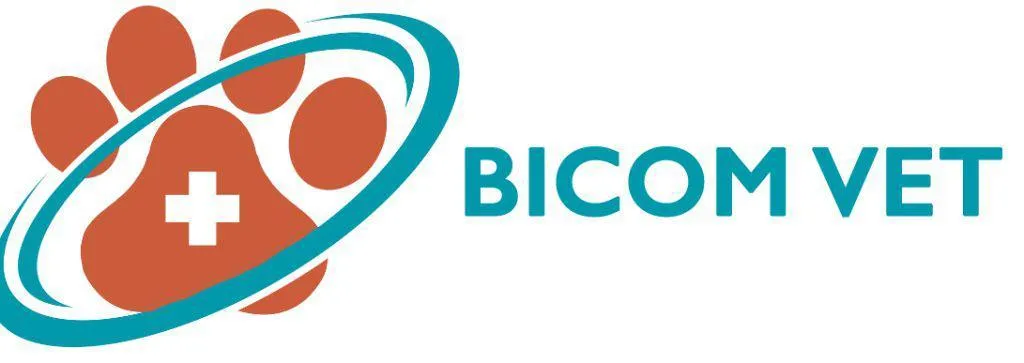
Bioresonance in Veterinary Cancer Care: A Holistic Approach
The Role of Bioresonance Cancer Treatment in Veterinary Oncology
In recent years, veterinary oncology has seen significant advancements in both traditional and alternative cancer treatments. Among these, bioresonance cancer treatment has emerged as a novel approach aimed at supporting cancer management in animals. In this blog, we will explore the specific role that bioresonance treatment plays in veterinary oncology, focusing on its practical application, potential benefits, and why pet owners are increasingly considering this treatment for their beloved animals.
Understanding Bioresonance Cancer Treatment in Veterinary Oncology
Bioresonance cancer treatment is a non-invasive alternative therapy based on the principle that each cell, organ, and tissue in the body emits electromagnetic frequencies. When an animal develops cancer, it is believed that the frequencies emitted by cancerous cells differ from those of healthy cells. By using a bioresonance device, a veterinarian can supposedly detect these abnormal frequencies and attempt to rebalance them, supporting the animal’s natural healing processes.
In the context of veterinary oncology, bioresonance does not act as a cure for cancer. Instead, it is used as a complementary therapy to improve an animal’s quality of life, assist in pain management, and mitigate the side effects of conventional cancer treatments like chemotherapy and radiation. Veterinary oncologists are gradually integrating this approach into broader treatment plans, offering a more holistic model of cancer care for pets.
The Role of Bioresonance in Early Detection and Diagnosis
While the primary use of bioresonance treatment in veterinary oncology is to support cancer management, some holistic veterinarians believe that it may also play a role in the early detection of cancer. Since bioresonance devices can identify abnormal frequencies, it is suggested that they may be able to detect cancer in its early stages, potentially before physical symptoms appear. Early detection is critical in veterinary oncology, as it can significantly improve treatment outcomes.
However, it's essential to note that bioresonance treatment should not replace standard diagnostic methods like biopsies, ultrasounds, or blood tests. Instead, it may be used as an adjunct to these conventional diagnostic tools, offering additional insight into an animal’s overall health.
Supporting Conventional Cancer Treatments with Bioresonance
One of the primary roles of bioresonance cancer treatment in veterinary oncology is to complement traditional cancer therapies. Treatments like chemotherapy and radiation, while effective, can be extremely taxing on an animal’s body. Pets undergoing these treatments often experience side effects such as fatigue, nausea, loss of appetite, and a weakened immune system.
Bioresonance treatment is believed to support the body’s ability to cope with these side effects by helping restore balance to its energy fields. By addressing the disruptions caused by both the cancer and the aggressive treatments, bioresonance may reduce the severity of these side effects, making the conventional treatments more tolerable for the animal.
Additionally, some veterinarians report that animals receiving bioresonance cancer treatment alongside conventional treatments show improvements in energy levels, mood, and overall vitality. While the therapy itself is not a cure, it plays a vital role in enhancing the pet’s quality of life during their battle with cancer.
Pain Management and Symptom Relief in Veterinary Oncology
Cancer often brings significant pain, particularly as it progresses to more advanced stages. Managing this pain is a critical aspect of veterinary oncology, and bioresonance has shown promise in helping to reduce discomfort in pets.
The electromagnetic frequencies used in bioresonance treatment are thought to stimulate the body’s natural healing processes, reducing inflammation and relieving pain. This is particularly valuable in cases where pain medications alone are insufficient or when they cause unwanted side effects. By integrating bioresonance cancer treatment into the overall care plan, veterinarians aim to provide more comprehensive pain relief, allowing pets to live with greater comfort even as they undergo challenging cancer treatments.
Enhancing Immune Function During Cancer Treatment
Cancer, as well as its treatments, can weaken an animal's immune system, leaving them vulnerable to infections and other health issues. Bioresonance treatment is believed to strengthen the immune system by rebalancing the body’s natural frequencies, helping the pet to better resist illness.
In the context of veterinary oncology, maintaining a strong immune system is vital, particularly for pets undergoing chemotherapy or radiation, which often compromise immune function. By integrating bioresonance into the cancer care plan, veterinarians hope to support the immune system’s ability to fight not only cancer cells but also secondary infections and illnesses that may arise during treatment.
Integrating Bioresonance Cancer Treatment into Holistic Veterinary Care
Veterinary oncology is increasingly embracing integrative approaches that combine conventional and alternative therapies. Bioresonance cancer treatment fits into this model by offering a non-invasive, holistic approach to cancer care. While traditional treatments focus on directly attacking the cancer, bioresonance aims to support the body’s natural healing capabilities, helping to mitigate side effects, reduce pain, and improve overall wellness.
For pet owners seeking a more natural and less invasive cancer treatment option, bioresonance treatment offers a valuable complement to conventional methods. It provides veterinarians with an additional tool to care for pets in a way that considers both the physical and emotional aspects of cancer treatment. While bioresonance alone may not cure cancer, its role in veterinary oncology is to enhance the overall quality of life for animals battling this serious disease.
Conclusion
As the field of veterinary oncology continues to evolve, alternative therapies like bioresonance cancer treatment are playing an increasingly important role. Pet owners are seeking holistic approaches that not only focus on treating the cancer but also support their pets' overall well-being. Bioresonance treatment offers a non-invasive, pain-free option that can help improve the quality of life for animals undergoing cancer treatments.
While scientific research into the effectiveness of bioresonance cancer treatment is still in its early stages, many veterinarians and pet owners are finding value in this therapy as part of an integrative approach to cancer care. The role of bioresonance treatment in veterinary oncology will likely continue to expand as more pet owners seek compassionate, comprehensive care for their pets during their cancer journey.
In conclusion, bioresonance serves as a supportive element in veterinary oncology, particularly in improving quality of life, managing pain, and reducing the side effects of conventional treatments. For pet owners considering this option, it is essential to consult with a qualified veterinarian to ensure that bioresonance is used appropriately within a broader cancer care plan tailored to the pet's individual needs.
Search Testimonials
It is important to remember that individual anecdotes and testimonials should not be used as the sole basis for making decisions about medical treatments or therapies.
When it comes to alternative therapies like bioresonance, it is essential to rely on evidence-based research and the advice of trained medical professionals. While some people may have positive experiences with bioresonance for their animals, it is important to approach these claims with caution and seek out reliable information from reputable sources.
Ultimately, the decision to pursue bioresonance or any other alternative therapy for your animal should be made in consultation with a veterinarian or animal health professional who can help you weigh the potential benefits and risks.
Pollen – a nuisance for our animal companions too
Hay fever patients are only too familiar with the problem. Year after year the misery begins in the spring with stinging eyes, runny itchy nose and, in severe cases, with a cough and asthma as well. What is perhaps less well known is that our animals too suffer increasingly from this same medical condition.
Just as with humans, the incidence of allergies is also becoming more frequent in animals. Allergic reactions may be provoked by airborne allergens such as pollen, house dust and house dust mites, amongst other factors. Food intolerance is also on the increase, however, and represents a distressing problem for the affected animals.
Now, in spring, as it gets warmer, allergic animals are all suffering as well. With animals it is mainly their skin which itches or else their
noses run more and they occasionally sneeze. Changes in their coats and reddening of the skin are often noticed in the face, feet and ears. These areas often display bloody claw marks and develop into very painful weeping eczema, indicating the severity of the irritation.
This type of problem in animals can be treated with the allergy programs pre-loaded in the Bicom device.
Dr. med. vet. C. May
Quick Links


Facebook
Instagram
Mail